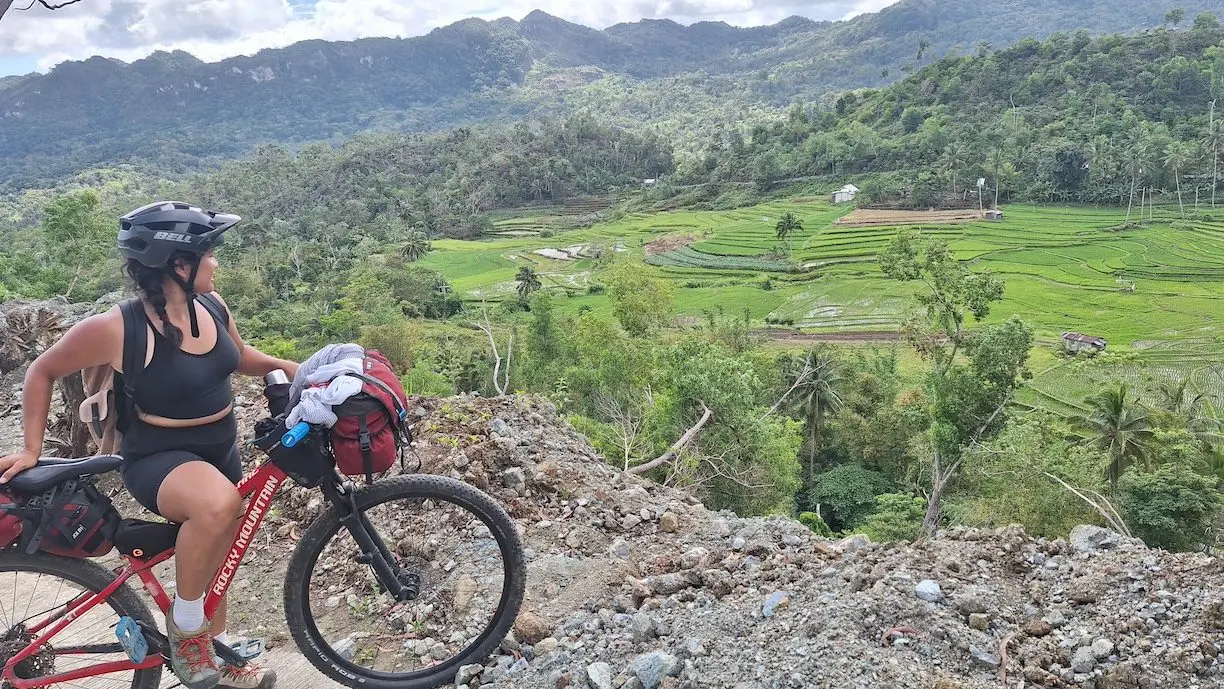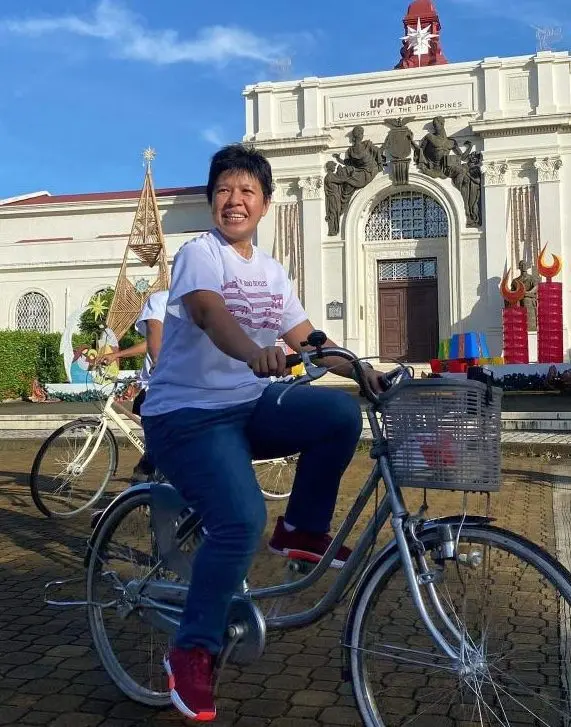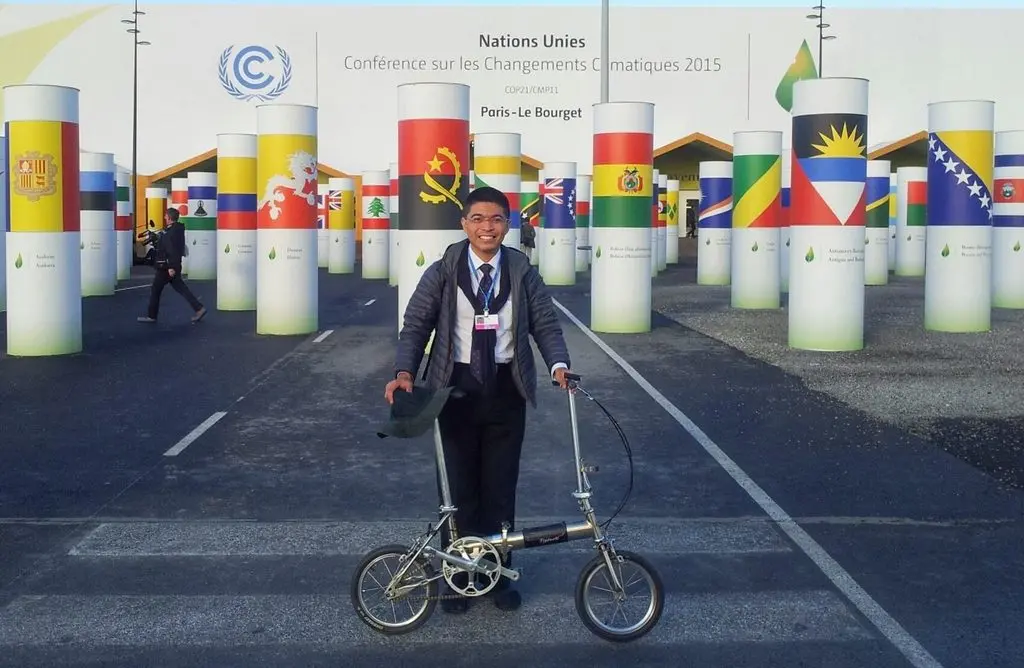
BAGUIO, Philippines – Active mobility, according to the Institute for Climate and Sustainable Cities, includes walking, cycling, and using personal mobility devices for transportation, combined with the use of public transport.
The clamor for more areas conducive to active mobility is reflected in the SWS survey results from 2023 that found more than a third of Filipinos own a bicycle.
Some bike commuters all over the country weigh in on making more cities bike-able and livable.
Iloilo: Most bike-friendly
Iloilo City has been lauded as among the Philippines’ most bike-friendly cities. Early Sol Gadong, assistant professor at the University of the Philippines-Visayas (Iloilo), started biking regularly during the pandemic for her mental health and to complete errands.
Soon after restrictions eased, she visited Sydney, Australia and experienced riding down wide dedicated bike lanes with direct paths from residences to universities and hospitals.
“That’s when I thought: Puwede palang gawin! (So, it can be done!) If leaders want to do it, they will find a way.”

Gadong sees a lot of points to improve the cycling experience in Iloilo:
- Make the Iloilo Esplanade accessible to more residential areas.
- Improve the connectedness of bike lanes so cyclists don’t compete with motorists.
- Increase the number of protected bike lanes.
- Implement active mobility policies.
- Iloilo has many bike-friendly ordinances but their implementation leaves much to be desired.
- Let officials and decision makers have firsthand knowledge of the bike commute experience, so they can better appreciate and understand the concerns of regular bike commuters.
- Operate within the framework of the road hierarchy, where pedestrians have the highest and motorists have the least priority.
Baguio: Unique terrain
Baguio City received a silver rating for bike friendliness at the last Mobility Awards.
Valerie de Guzman, a market research professional originally from Bulacan, started working there in 2010. Growing up, she preferred staying at home and indoors. “I didn’t like to explore at all.” But that changed when she became a mountaineer in college.
While working in Baguio, thanks to a bike mechanic she befriended, Valerie discovered that to navigate its unique topography, she needed a mountain bike.
When De Guzman started biking, the cycling community was small and they all knew each other. “We would wave to each other on our way to work or home.”
She joined the Daily Cycling Movement, which holds bike rides at least twice a month. She also joins the Sunday Ride organized by Mayor Benjamin Magalong.
She said the sense of community of such groups (of which there are more) encourages more people to take up biking.
In 2022, De Guzman was awarded Padyak Champion for her delivery service, Valerides, for supporting local farmers and entrepreneurs.
“I encourage bike-packing in the Cordillera. There are many places that people can explore in the region that they can only reach by bike, she said. “I have explored many places in the Philippines on my bike. But there are still many more places that I have to visit.”
According to her, the city should hold Bike 101 lessons to help increase the number of people on bikes and bring down levels of air pollution in the congested city.
Davao: Sprawling challenge
Like Baguio, Davao City received a silver rating for bike-friendliness last year.
Rommel Real, faculty member of the University of the Philippines-Mindanao, started cycling regularly while pursuing doctoral studies in Canberra, Australia.
“They have a lot of cycling networks, allowing cyclists to go from one point to another without having to take the main road,” he observed.
After returning to the Philippines, he bought an electric bicycle to navigate the 16 kilometers from his home to the campus.
“There are designated bike lanes in Davao,” he said, “but in some areas, they are not protected. In addition, though they emanate from downtown Davao, in areas farther away from the city center, they cease to exist.”
In some cases, designated bike lanes become short-term parking spots when there is no available parking area in front of establishments like banks.
Real said the situation could be improved by doing the following:
- Establish a bike share program, so more people can bike-commute despite not owning a bike.
- Increase protected lanes. These will help ease traffic, especially along the main roads.
- Improve public transport. Many people who own bikes opt out of using them during weekdays because of the large volume of motorized vehicles they have to contend with on the road. Reliable public transport will encourage more people to take them, resulting in road decongestion.
- Maintain pedestrian lanes. Since crossing and changing lanes can be a challenge for cyclists, they can use pedestrian lanes for this purpose by walking their bikes across. But the lines need to be painted clearly and stop lights with timers installed.

Metro Manila: Navigating traffic
Val Roque, a civil servant in the foreign service, has taken his folding bicycle everywhere!
The advantage of a folding bike, he said, is that he can take it onto public transport. In Metro Manila, he has taken it on buses and light rail trains. The heat and humidity can be a deterrent, but Roque has strategies like using a microfiber towel soaked with a bit of water and soap in a zip-lock bag to freshen up after being exposed to the elements.
Also, he arrives at work with enough time to spare to change into work-appropriate wear–he stashes a week’s worth of barong in his office.
Using his folding bike, which he describes as a high-performance bike that can be used on the road and the mountains, Roque has traversed the French way of the highly popular Camino de Santiago in Spain, and crossed the Swiss and Italian alps.
“I cycle because it’s the most practical means of transport and addresses a lot of challenges: congestion, poor health, climate change,” he said.
Roque said he admires the park connector infrastructure in Singapore, which allows pedestrians and cyclists to share the paths to get from one point to another.
In Metro Manila, he said, bike commuting can be encouraged by having tree-lined protected bike lanes, so that the trees provide shade as well as serve as barriers.
Public clamor and political will
“The public need to see for themselves that biking is safe. By putting the right infrastructure in place, more people will surely take up cycling,” Real said.
According to Gadong: “Leadership also plays a big role. Filipinos look to what the leaders of the community are doing as a model of what should be done. One of the first steps to effecting change is to have more of our leaders do what everybody should be doing: if they want more people to bike-commute, they should also do so. Bike-commuters, in turn, should not stay quiet but to reach out to their local government leaders. They’re there to serve us, we should be allowed access to tell them what we see is going wrong and give suggestions on how to solve problems.”
“Rappler’s initiative, Bike Walk PH, is good. We should scale it down to the community level, for example, to be able to text the LGU about areas where mobility is hampered or hindered. The active mobility situation will then be improved.
“The main issue is the safety concern. If streets and roads are safe for women and young children to bike, it’s going to be much safer for everybody,” Gadong said.
– Rappler.com
